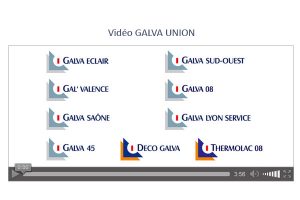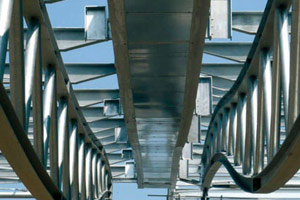RECOMMENDATION ON THE CHOICE OF STEELS
WELL CHOOSE YOUR STEEL FOR GALVANIZATION
The results obtained during hot-dip galvanizing depend, in part, on steels, in particular their chemical composition.
In fact, when steel is immersed in liquid zinc, a diffusion reaction occurs between the zinc and the steel.
The formation rate and the structure of the coating are a function of silicon and phosphorus. These two elements, contained in the steel, accelerate the growth of zinc-iron alloy layers and can thwart the results of the galvanization.
It is necessary to impose specifications for the respect of these two elements. The standard NF A 35-503 “Steels for hot dip galvanizing” defines three categories of steel according to their guaranteed product content in silicon and phosphorus. You can obtain the guarantee by asking the steel supplier to produce a product control document according to NF EN 10204: acceptance certificate 3.1A.
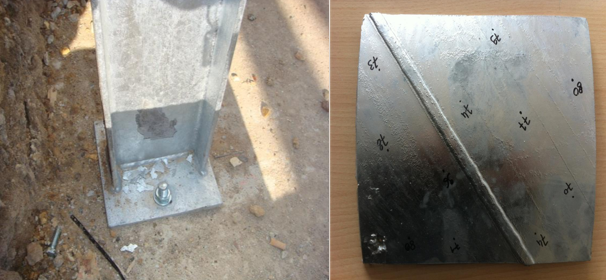
Challenges of steel that come out after galvanizing.
Steels too rich in silicon, phosphorus or non-compliant with the NF A 35-503 standard cause strong and absorbing reactivities of zinc, which engage a poor aesthetic quality and embrittlement and peeling of the coating.
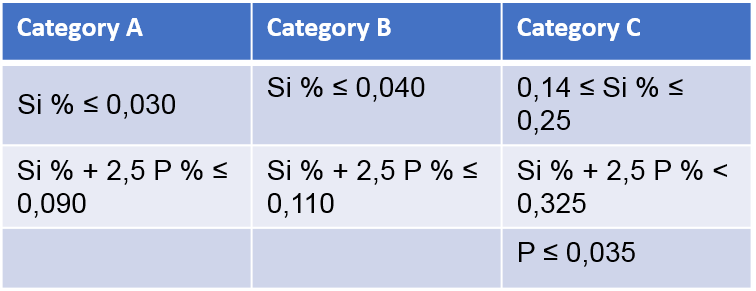
(*) Each grade of steel (A, B or C) has its application
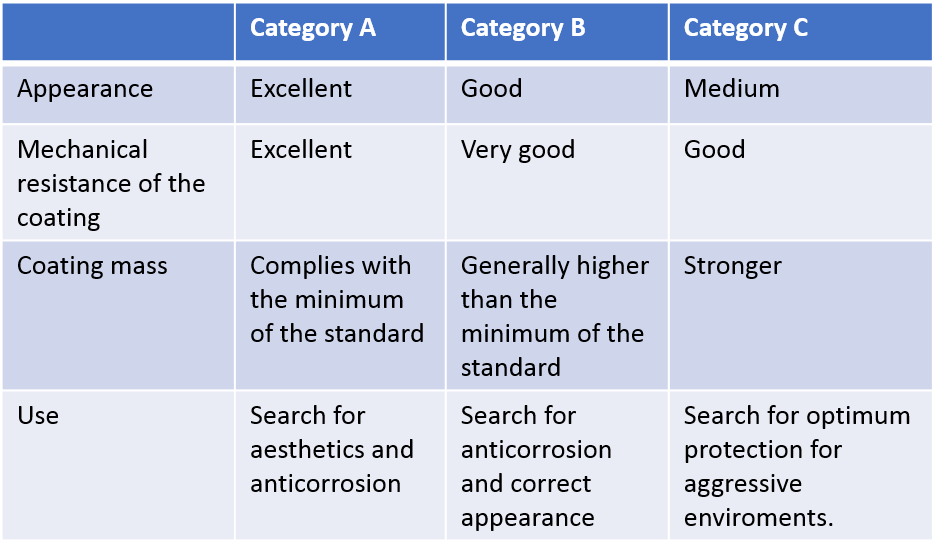
These elements are purely indicative
Category of steel
Category A and to a lesser extent Category B provide a coating of uniform appearance and thickness corresponding to the minimum values guaranteed in standard NF EN ISO 1461.
For category C steels, the coating thickness is, on identical galvanizing conditions, of the order of 120 μm to 200 μm. For certain types of complicated or massive pieces that require a longer immersion time, the thicknesses may exceed 200 μm. The appearance is generally duller than for Grade A or B steel. Gray, marbled or rough areas that do not affect the corrosion resistance may appear.
The corrosion resistance of this type of coating is equivalent to that of a typical appearance of coating and its lifetime is typically greater, since the latter, in a given location is a function of the coating thickness.
Influence of the Si content on the thickness of the galvanized coating (relative value)
Repair System
However, it will be necessary to take more precautions during transport or placement to avoid localized flaking due to violent shocks. If this is the case, it is necessary to recondition the chipped areas. This repackaging will be done either by spraying, or by applying ZINQ Fix adhesive strips or tapes, which we recommend.
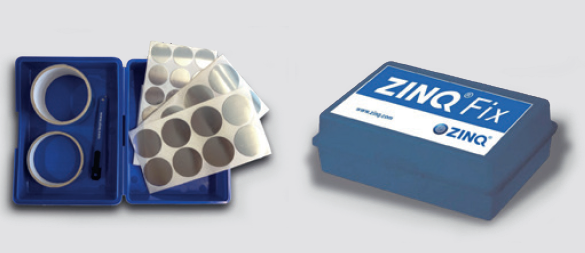
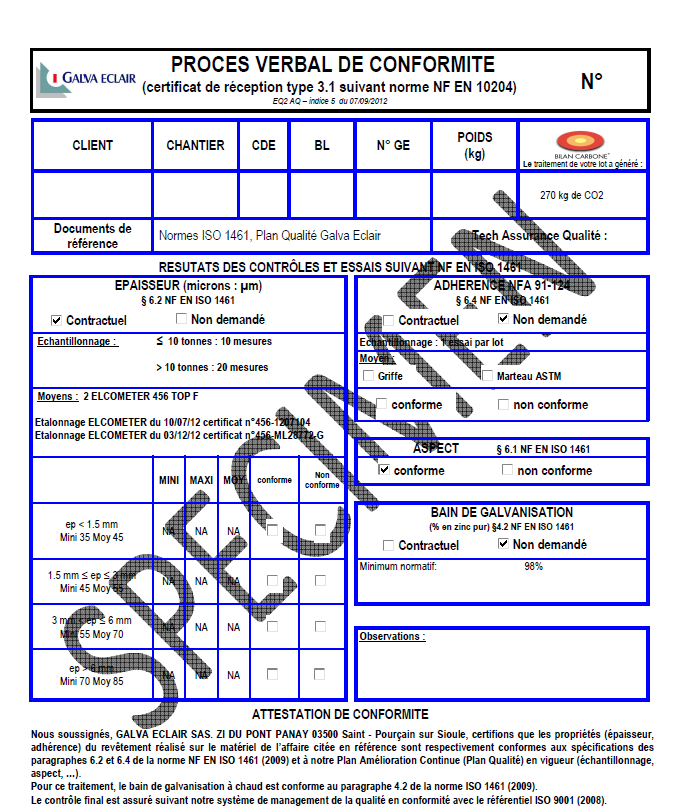
HOW TO READ YOUR PURCHASE AND SUPPLY DOCUMENTS FOR GALVANIZATION STEELS
Special requirement:
A receipt certificate 3.1A according to standard NF EN 10204, supplied at the time of delivery, will confirm compliance with this requirement.
These elements are purely indicative
Source: Galvazinc, Recommendation on the choice of steels.
CHOOSE A PLANT



